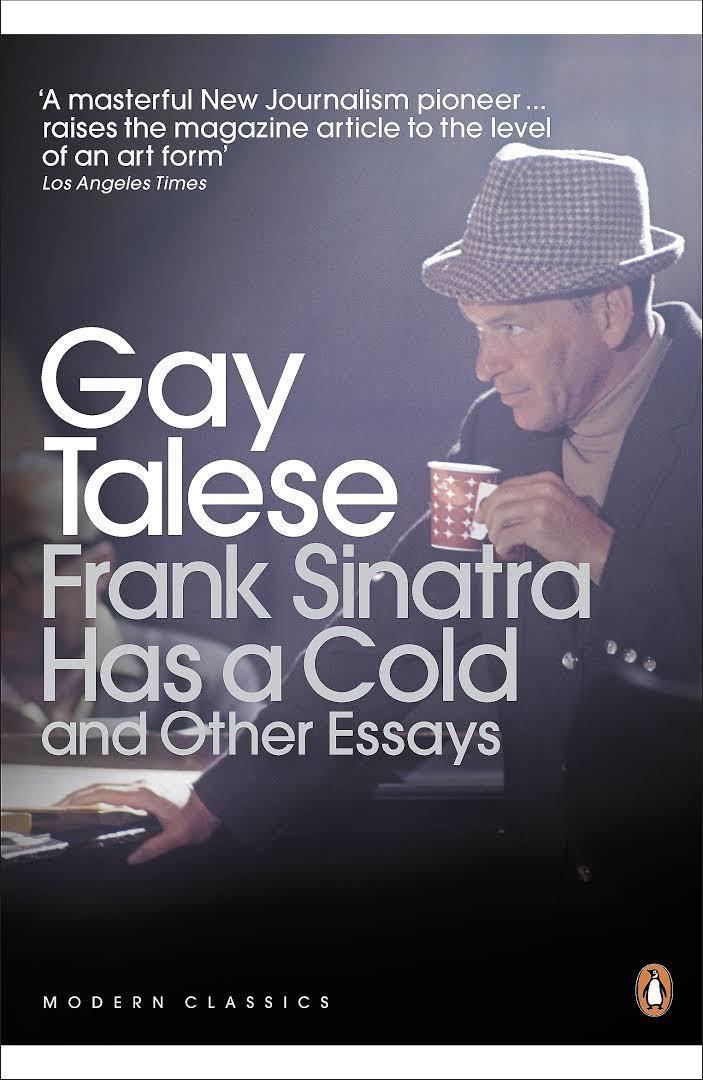Originally published April 1966 | ||
 | ||
Similar Gay Talese books, Other books | ||
Gay talese frank sinatra has a cold
"Frank Sinatra Has a Cold" is a profile of Frank Sinatra written by Gay Talese for the April 1966 issue of Esquire. The article is one of the most famous pieces of magazine journalism ever written and is often considered not only the greatest profile of Frank Sinatra but one of the greatest celebrity profiles ever written. The profile is one of the seminal works of New Journalism and is still widely read, discussed and studied. In the 70th anniversary issue of Esquire in October 2003, the editors declared the piece the "Best Story Esquire Ever Published". Vanity Fair called it "the greatest literary-nonfiction story of the 20th century."
Contents
- Gay talese frank sinatra has a cold
- Frank sinatra has a cold
- Assignment
- Profile
- Influence on New Journalism
- References
Frank sinatra has a cold
Assignment
Talese had spent the first ten years of his career at The New York Times. He felt restricted by the limitations of newspaper writing and began searching for jobs with magazines. In 1965, he signed a one-year and six-story contract with Esquire magazine. His first assignment from Esquire editor Harold Hayes was to write a profile of Frank Sinatra. It was a difficult assignment; Sinatra had turned down interview requests from Esquire for years.
Sinatra was about to turn 50 and was heavily in the spotlight. Sinatra's relationship with 20-year-old Mia Farrow was constantly in the news. A CBS television documentary had upset Sinatra, who felt that his life was being pried into and was unhappy about speculation in the documentary about his connection to Mafia leaders. He was also worried about his starring role in an upcoming NBC show named after his album, A Man and His Music and his various business ventures in real estate, his film company, his record label and an airline. At the time, Sinatra maintained a personal staff of 75.
Sinatra refused to be interviewed for the profile. Rather than give up, Talese spent the three months, beginning in November 1965, following Sinatra and observing everything he could and interviewing any members of his entourage who were willing to speak. Esquire paid nearly $5,000 in expenses over the duration of the story. Talese vacillated on whether the story could be finished but ultimately concluded, in a letter to Harold Hayes, that "I may not get the piece we'd hoped for—the real Frank Sinatra but perhaps, by not getting it—and by getting rejected constantly and by seeing his flunkies protecting his flanks—we will be getting close to the truth about the man." Without Talese ever receiving Sinatra's cooperation, the story was published in April 1966.
Profile
The profile begins with Sinatra in a sullen mood at a private Hollywood club. Stressed about all the events in his life Sinatra and many of his staff are in a poor mood because Sinatra is afflicted by the common cold, hampering his ability to sing.
Influence on New Journalism
The article was an instant sensation. The journalist Michael Kinsley has said, "It's hard to imagine a magazine article today having the kind of impact that [this] article and others had in those days in terms of everyone talking about it purely on the basis of the writing and the style."
After Tom Wolfe popularized the term "New Journalism" in his 1973 anthology The New Journalism, Talese's piece became widely studied and imitated.
The piece is often contrasted to modern magazine profiles in which the writers spend little time with their subjects or when writers fabricate elements of their story, such as Jayson Blair, Stephen Glass, or Janet Cooke.
Talese has come to reject the label of "New Journalism" for this reason. He told NPR: "The term new journalism became very fashionable on college campuses in the 1970s and some of its practitioners tended to be a little loose with the facts. And that's where I wanted to part company. I came up with the New York Times as a copy boy and later on became a reporter and I so revered the traditions of the Times in being accurate."
The story continues to receive acclaim and is cited by Talese as one of his best works. The story, which continues to be widely read, has been republished in multiple anthologies.
